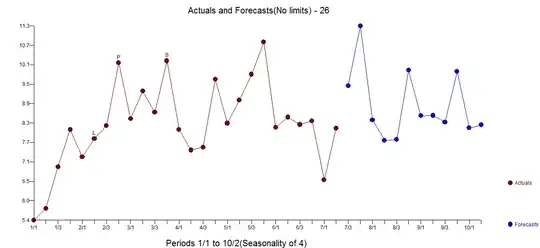I have a variable $X$ that decays log-normally with time, and I have estimated the mean and the SD of that log-linear relationship. I also have a (categorical) variable $Y$ which—I hypothesize—will affect linearly both the mean and the SD. It is this variability between $Y$ and the mean and the SD that I am interested in, and my question is what model is suitable for this.
I have been searching for it and, apparently, what I am looking for is a GLM of the gamma family, but I am not sure why or if there are better alternatives to it. I would appreciate any hint.
Edit: As requested, I give more details and context. In the real world, $X$ represents the level of a certain biomarker of inflammation, which decays log-normally with time, $T$, the range of which goes from 0 (the first measurement) to 120 hours, i.e., I have several measurements per patient, and I have around 1000 measurements overall.
I have another variable, which I called $Y$ in the pre-edit text, which is the type of surgery undertaken by the patient. This is a binary variable ("minimally invasive surgery", "not minimally invasive surgery"). I want to know how this variable (and, potentially, others) affects the mean and variance of the log-normal relationship between the levels of the biomarker and time.
Edit 2: As requested, I provide a plot of the relationship between $X$ and time. I would like to build a model that allows me to simulate data with the same distribution as you see in the image, but taking into consideration the fact that patients may have undertaken either minimally invasive surgery or not minimally invasive surgery. I mean, I don't want "two curves", but addressing the variability in the mean and the SD that the surgery variable introduces.
